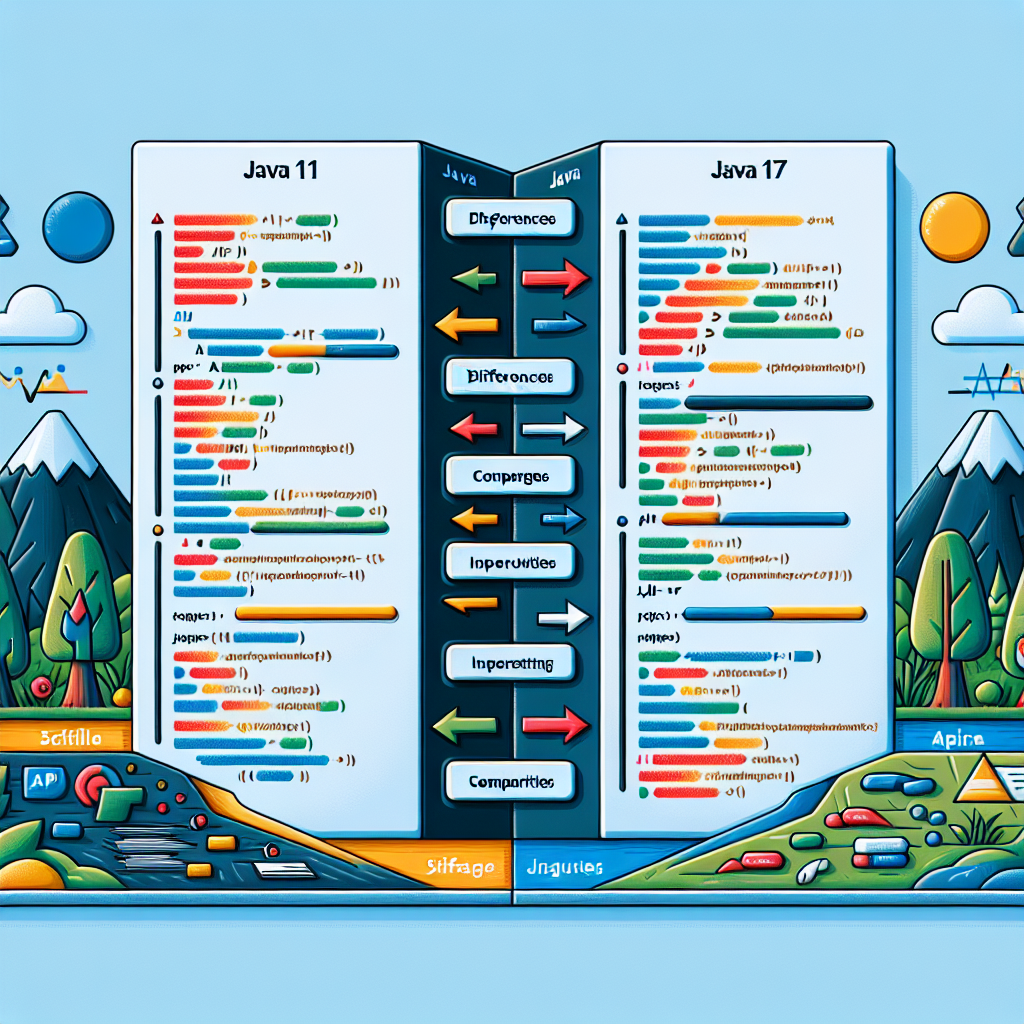Java 11 vs. Java 17: A Coffee-Fueled Journey to Code Nirvana
In the realm of programming, Java reigns supreme, like a caffeine-infused Gandalf guiding developers through the treacherous world of software engineering. As the Java language evolves, each new version brings a tantalizing aroma of fresh features and enhancements, and Java 11 and Java 17 are no exception. So, don our virtual coffee mugs and embark on a caffeine-powered adventure to explore the key differences and updates between these two Java titans.
Local Variable Type Inference: The Caffeine Boost You Need
Java 11 introduces a game-changer for programmers everywhere: local variable type inference. Imagine yourself as a detective, meticulously inferring the type of a criminal based on their peculiar behavior. Well, Java 11 does the same thing for your variables! It automatically deduces the type of local variables from their initializer expressions, saving you from having to type out tedious declarations. It’s like having a caffeine-fueled sidekick whispering the type of a variable in your ear, making your coding life a breeze.
Nestmates: Unlocking Hidden Powers
Java 17 takes us deeper into the world of classes and methods, introducing a revolutionary concept called nestmates. Nestmates are classes or interfaces that can be declared within other classes or interfaces, opening up a whole new realm of possibilities. They’re like the secret allies who reside within the walls of your code, ready to surprise you with their hidden powers when you least expect it.
Sealed Classes: The Enigmatic Guardians
Java 17 unleashes sealed classes upon the programming world, bringing a touch of mystery to your code. Sealed classes are restricted classes that can only be subclassed by their declared subclasses, creating a sense of exclusivity and control. Imagine them as enigmatic guardians, protecting the integrity of your software by preventing unauthorized access.
Pattern Matching for Switch: The Switch That Knows It All
The humble switch statement gets a major caffeine boost in Java 17 with the introduction of pattern matching. This allows you to match against complex patterns, such as objects of different types or even null values. It’s like giving your switch statement a caffeine IV drip, empowering it to make even the most intricate decisions with ease.
Text Blocks: Goodbye String Concatenation, Hello Caffeine Kick
Java 11 introduces text blocks, a revolutionary way to write multiline strings. No more awkward string concatenation or messy string builders. Just wrap your text between triple quotes, and Java 11 will handle the rest. It’s like having a caffeine-fueled barista crafting a perfectly balanced string for you, saving you precious time and energy.
Cleanup: The Magic of Garbage Collection on Steroids
Java 11 turbocharges garbage collection with its cleanup feature, making your code more efficient and reducing memory leaks. Imagine a caffeine-powered vacuum cleaner, relentlessly seeking out and disposing of unused objects. Cleanup ensures that your code runs smoother than a caffeine-fueled ninja, optimizing memory usage and keeping your software running like a well-oiled machine.
Java 11 and Java 17 are not just mere updates; they’re caffeine-infused power-ups that elevate your programming experience to new heights. They make your code more concise, powerful, and efficient, allowing you to channel your inner coding wizard and create software that will leave a lasting impression.
So, whether you’re a seasoned Java developer or a caffeine-curious novice, the journey of discovering the differences between Java 11 and Java 17 will be an exhilarating one. Let the caffeine flow through your veins as you embark on this coding adventure, and may your software creations be as invigorating as a perfectly brewed cup of Java!




